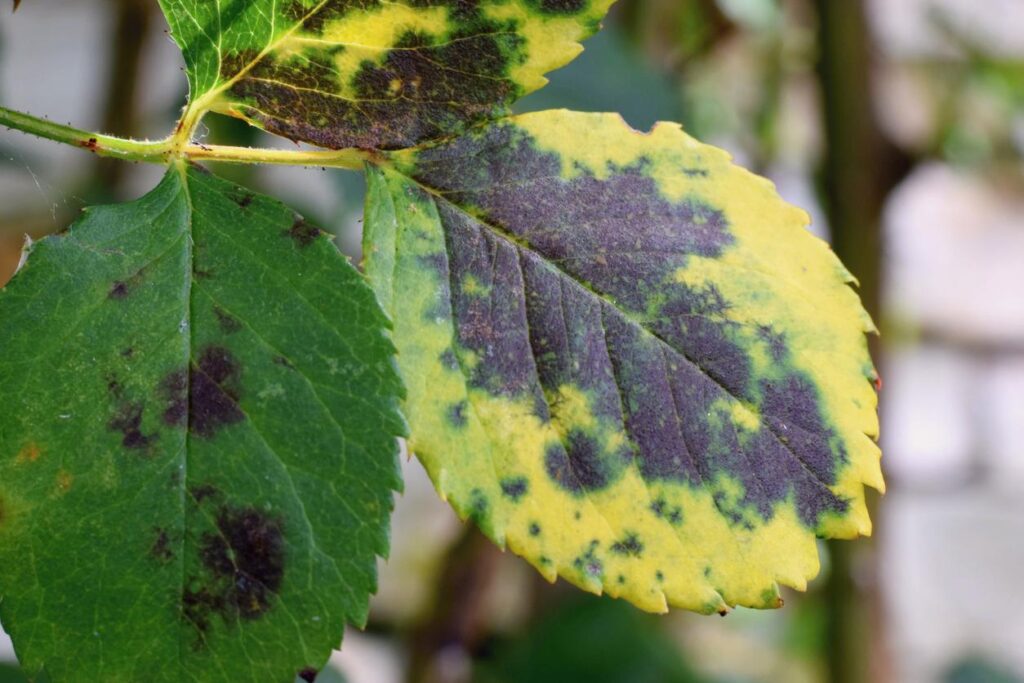
Black leaves on plants can be a distressing sight for any gardener or plant enthusiast, signaling potential issues that require immediate attention. Understanding the underlying causes and implementing appropriate remedial measures are essential for restoring plant health and preventing further damage. This article delves into the common causes of black leaves, methods for identification, and effective solutions to address this issue.
I. Introduction to Black Leaves on Plants
A. Significance and Concerns
The presence of black leaves on plants often indicates stress, disease, or nutrient deficiencies, posing a threat to the overall health and vitality of the plant. Ignoring black leaves can lead to further deterioration and compromise the plant’s ability to thrive.
B. Common Causes
Black leaves can result from a variety of factors, including environmental stressors, nutritional imbalances, pest infestations, and diseases. Identifying the specific cause is crucial for implementing targeted treatment and preventing recurrence.
C. Importance of Prompt Action
Addressing black leaves promptly is essential to prevent irreversible damage and promote plant recovery. Early intervention increases the likelihood of successful treatment and minimizes the risk of spreading to other parts of the plant or neighboring plants.
II. Identifying the Underlying Cause
A. Environmental Factors
1. Light Exposure
Inadequate or excessive light exposure can cause blackening of leaves, particularly on sensitive plant species. Insufficient light may lead to chlorophyll breakdown and leaf death, while intense sunlight can result in sunburn and tissue damage.
2. Temperature Fluctuations
Extreme temperature fluctuations, such as sudden drops in temperature or exposure to frost, can cause blackening of leaves due to cold injury or frost damage. Plants may exhibit blackened, water-soaked lesions or necrotic tissue in response to freezing temperatures.
B. Nutritional Deficiencies
1. Macronutrients
Black leaves may indicate deficiencies in essential macronutrients, such as nitrogen, potassium, or phosphorus, which are vital for plant growth and development. Nutrient deficiencies disrupt metabolic processes and compromise the plant’s ability to produce chlorophyll, leading to leaf discoloration and blackening.
2. Micronutrients
Micronutrient deficiencies, including iron, magnesium, and manganese, can also result in black leaves and other symptoms of nutrient stress. These trace elements play critical roles in enzyme activation and photosynthesis, and their absence can impair plant function and vitality.
C. Pest and Disease Infestations
1. Fungal Infections
Fungal pathogens, such as powdery mildew, botrytis blight, or sooty mold, can cause blackening of leaves as they colonize plant tissues and produce dark spores. Fungal infections thrive in humid environments and often manifest as powdery or velvety growth on leaf surfaces.
2. Insect Pests
Certain insect pests, such as aphids, thrips, or spider mites, can cause blackening of leaves through feeding damage or the transmission of plant pathogens. Insect infestations weaken plant defenses and leave foliage susceptible to secondary infections, resulting in blackened or necrotic tissue.
III. Remedial Measures for Black Leaves
A. Adjusting Environmental Conditions
1. Light Levels
Provide optimal light conditions for the affected plant species, ensuring sufficient but indirect sunlight to prevent leaf burn and minimize stress. Adjust positioning or provide shade as needed to maintain consistent light exposure.
2. Temperature and Humidity
Maintain stable temperature and humidity levels to prevent temperature-related stress and minimize the risk of fungal infections. Use protective covers or row covers to shield plants from extreme weather conditions and create a favorable microclimate.
B. Nutritional Supplements
1. Fertilization
Address nutrient deficiencies by applying balanced fertilizers or organic amendments tailored to the specific needs of the plant. Monitor soil pH and nutrient levels regularly and adjust fertilizer applications accordingly to promote healthy growth and prevent further leaf blackening.
2. Soil Amendments
Improve soil structure and nutrient availability by incorporating organic matter, such as compost or aged manure, into the soil. Organic amendments enhance soil fertility, microbial activity, and water retention, supporting overall plant health and resilience.
C. Pest and Disease Control
1. Organic Treatments
Treat fungal infections with organic fungicides or botanical extracts containing antifungal properties, such as neem oil, garlic extract, or copper-based sprays. Apply treatments preventively or at the first sign of infection to inhibit fungal growth and protect plant tissues.
2. Integrated Pest Management
Implement integrated pest management strategies to control insect pests effectively while minimizing environmental impact. Use natural predators, such as ladybugs or parasitic wasps, to reduce pest populations and employ physical barriers or traps to prevent infestations.
IV. Preventive Strategies for Future Protection
A. Regular Maintenance and Monitoring
1. Inspecting Plant Health
Conduct regular inspections of plant health to identify early signs of stress, disease, or pest activity. Monitor leaf color, texture, and growth patterns to detect abnormalities and intervene promptly to prevent escalation.
2. Implementing Preventive Measures
Implement preventive measures, such as proper sanitation, crop rotation, and companion planting, to minimize the risk of black leaves and other plant problems. Remove and dispose of diseased plant debris and adopt cultural practices that promote plant resilience.
B. Proper Plant Care Practices
1. Watering Techniques
Practice proper watering techniques, such as deep watering and morning irrigation, to maintain adequate soil moisture and prevent water stress. Avoid overwatering or waterlogged conditions that can lead to root rot and foliar diseases.
2. Pruning and Sanitation
Prune diseased or damaged foliage promptly to prevent the spread of pathogens and promote new growth. Use clean, sterilized tools to avoid cross-contamination and sanitize pruning equipment between uses to prevent disease transmission.
C. Enhancing Plant Resilience
1. Strengthening Immune Systems
Support plant immune systems with organic supplements, such as seaweed extracts or beneficial microbes, to enhance disease resistance and stress tolerance. Boosting plant immunity helps plants withstand environmental challenges and recover from damage more effectively.
2. Promoting Overall Plant Health
Promote overall plant health through balanced nutrition, proper care, and attention to environmental conditions. Healthy, vigorous plants are better equipped to fend off pests and diseases and are more resilient to stressors that can lead to black leaves.
V. Conclusion
Addressing black leaves on plants requires a comprehensive approach that includes identifying the underlying cause, implementing targeted remedies, and adopting preventive strategies for long-term protection. By understanding the factors contributing to leaf blackening and taking proactive measures to address them, gardeners can restore plant health and ensure thriving, resilient gardens.




